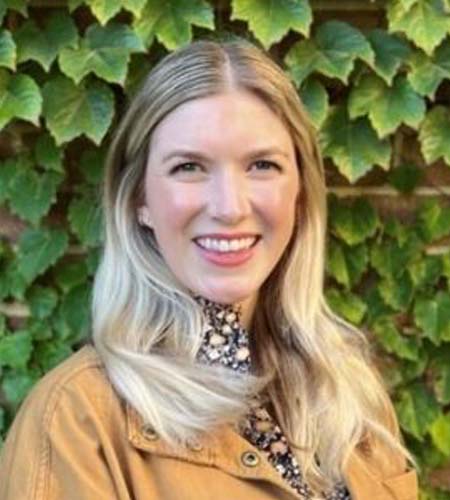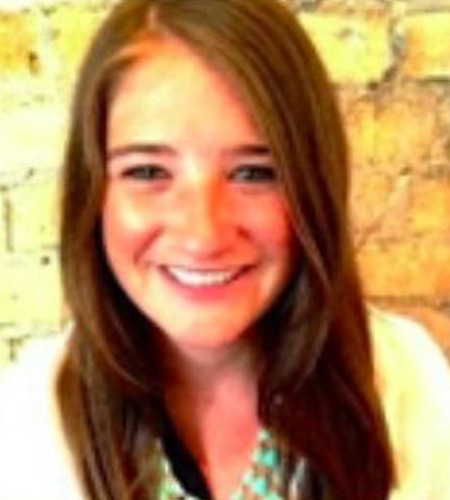Issue Archive
Feasibility & Efficacy of Yoga as a Therapeutic Intervention for U.S. Veterans

Jacklynn M. Fitzgerald, Kaley Davis, Meghan Bennett, & Rachel Bollaert
Section Editor: Sydney Timmer-Murillo
Burden of Physical Health Comorbidities in the U.S. Veteran Population
Research on the efficacy of yoga to treat physical and mental health disorders is on the rise, although, to our knowledge, no review has yet summarized the effects of yoga in U.S. veterans. This review aims to summarize what is known regarding the feasibility and efficacy of yoga as a therapeutic in this population. Treating mental health disorders, notably posttraumatic stress disorder (PTSD), depression, anxiety, and substance use disorders, remains a common focus in managing the health and well-being of U.S. veterans (Schnurr, 2022). While such focus is intuitive, approaches that narrowly focus on mental health alone may miss opportunities for improving life outcomes for veterans. This is because in addition to psychiatric disorders such as PTSD, U.S. veterans experience many physical health complications. Principal among these are obesity, cardiovascular disease, and metabolic syndromes (Ahmadi et al., 2011; Rosenbaum et al., 2015; van den Berk-Clark et al., 2018). Such physical comorbidities are not only linked to premature mortality (Franks & Olsson, 2007) and increased risk of hospital admissions (Chen et al., 2020), but also to greater PTSD severity (Babić, 2013; Heppner et al., 2012).
Notably, for U.S. Veterans, these physical health disorders are highly prevalent, as evidenced by the fact that over two-thirds of veterans with PTSD currently live with a metabolic syndrome, such as increased blood pressure, high blood sugar, or high cholesterol (Babić, 2013) and over 40% are classified as obese (Breland et al., 2017). Multiple factors may increase incidence of these disorders, foremost among them the fact that the U.S. veteran population is an aging demographic (Richard-Eaglin et al., 2020). For example, it is estimated that within the next three decades, over half of the U.S. veteran population will consist of individuals over the age of 60 (Richard-Eaglin et al., 2020). Although, age alone cannot fully account for prevalence of physical health disorders in this population (Assari, 2014), older aged Veterans in the health care system, particularly those with PTSD, will necessitate a more holistic approach to treatment and care. Here, it will be increasingly essential for care providers to jointly treat physical and mental health.
Exercise Trends and Barriers to Engagement
Alongside improved physical fitness, engagement of exercise is associated with reduction of early mortality, cardiovascular disease, diabetes, and obesity as evidenced in the general population (Chin et al., 2016; Colberg et al., 2010; Lee et al., 2022). Such reductions are apparent even when individuals engage in moderate levels of physical activity (Ekelund et al., 2019). Thus, engaging in different modalities and intensities of exercise may be a modifiable factor to decrease risk for negative health outcomes specific to the U.S. veteran population.
In recent years, exercise interventions have been employed as novel approaches for the treatment of mental health disorders, such as PTSD, in both community and military veteran populations, and results are promising (Hegberg et al., 2019a). In particular, a recent systematic review showed small-to-medium effects of exercise, including aerobic activity, strength-training, and yoga, on reducing PTSD symptoms in veterans (Reis, 2022) while other work shows exercise reduces PTSD symptoms when completed as a stand-alone regimen or as an adjunctive to standard psychological/pharmacological treatments (Hegberg et al., 2019b). Improved sleep quality and reduced waist circumference have also been reported in individuals with PTSD who undergo exercise, including resistance-training (Rosenbaum et al., 2015). Further, one study reported that female veterans with PTSD who underwent a 12-week exercise intervention consisting of moderate intensity aerobic exercise showed significant reductions in both PTSD and depressive symptoms (Shivakumar et al., 2017).
Despite the well-documented mental and physical health benefits associated with exercise in veterans, particularly those suffering from PTSD, the rates of physical inactivity remain high in this population. One study demonstrated that upwards of 68% of veterans with PTSD report no regular physical activity (Chwastiak et al., 2011). Low engagement in physical activity is likely due to significant barriers to engaging in exercise that exist for this population, including older age (Bollaert et al., 2023), a lack of clearance for engaging in exercise from a medical provider, and decreased social support (Hammarström et al., 2014; Metzgar et al., 2015; Venditti et al., 2014). Psychological barriers also exist. For instance, we have found decreased self-efficacy for overcoming barriers to exercise is related to less physical activity in U.S. veterans (Bollaert et al., 2023). However, these individuals retained a high motivation for engaging in exercise, despite reduced perceptions of self-efficacy (Bollaert et al., 2023). This suggests that strategies to strengthen individuals’ self-efficacy may be particularly helpful for this population, and that individuals who do not engage in physical activity still may be motivated to do so. One way to strengthen individuals’ self-efficacy may be through mastery experiences, whereby confidence develops after experiencing success in a particular task. Regarding exercise and yoga, interventionists could focus on highlighting individuals’ achievements, whether that be learning a new pose or continued attendance in a program. Another way to strengthen self-efficacy could be through verbal persuasion, or positive encouragement, either delivered from an interventionist or from one’s peers.
Yoga as a Promising Alternative
Prescribed exercise regimens may need to be specifically customized for U.S. veterans. Based on the above-mentioned barriers, activities that older veterans may find most difficult, such as high-intensity aerobic exercises, may be inadvisable for this population. Further, given the perceived social benefits associated with exercise in veterans (Holtz et al., 2014; Pebole & Hall, 2019), regimens that allow individuals to practice alongside others who may be able to offer social support and increase individual self-efficacy, whether that be other participants or exercise staff, may be particularly beneficial.
Yoga in particular is a form of exercise that has grown in popularity and accessibility in recent years and is associated with improved cardiovascular health (Cramer et al., 2014) and weight loss (Unick et al., 2022). Most importantly, yoga is a type of exercise that may be attractive to veterans precisely because it does not involve high intensity movement and can be conducted either
independently or in a group setting. Higher intensity or strength-based exercises may exacerbate physical discomfort, a particularly relevant consideration as the veteran population exhibits elevated medical comorbidities, including chronic pain that can develop as a direct result of injuries acquired during combat operations (Bayley et al., 2021). By contrast, yoga offers a low-impact alternative that is gaining increasing empirical support. Yoga is a mind-body exercise consisting of physical postures and stretching with a specific focus on breathing techniques and meditation (National Center for Complementary and Integrative Health., 2021). As an intervention, yoga has been associated with a variety of mental and physical health outcomes in the general population: reduced depressive symptoms (Cramer et al., 2013), stress (Riley & Park, 2015), and cardiovascular risk (Ernst & Lee, 2010), and improved well-being (Oken et al., 2006), self-compassion (Riley & Park, 2015), and sleep quality (Halpern et al., 2014).
Emerging evidence shows that yoga may be particularly beneficial for trauma-exposed individuals with resulting PTSD (Skaare, 2018; Wells et al., 2016). For example, individuals with PTSD who perform yoga experience reductions in symptoms (Seppälä et al., 2014), while a military-tailored, trauma-sensitive yoga intervention decreases PTSD severity in a clinically-meaningful way, based on PTSD score reduction as well as effect size for change (Cushing et al., 2018). In addition, yoga for veterans is associated with decreased insomnia, depression, and anxiety (Cushing et al., 2018) as well as substance use (Reddy et al., 2014). Recent research also demonstrates that yoga alleviates other physical symptoms in veterans specific to chronic pain (Bayley et al., 2021).
Considerations and Future Work
Despite such promise, relatively few empirical studies have been done to date examining the physiological and fitness effects of yoga in U.S. veterans, as well as assessing its feasibility in an aging U.S. veteran demographic. Specifically, there have been few (n = 3) randomized controlled trials (RCTs) on the use of yoga in a trauma-exposed population. One RCT found decreased PTSD symptoms after a 7-day breathing-based yoga intervention (Seppälä et al., 2014), while another found a decline in PTSD severity after 8 weeks of yoga (Jindani et al., 2015). A third RCT found a significant decline in PTSD symptoms after 10 weeks (van der Kolk et al., 2014) with effects sustained 1.5 years after the intervention in individuals who continued practicing (Rhodes et al., 2016). While these results are promising, yoga as a form of exercise targets both psychological and physiological health, while physiological changes as the result of long-term yoga have only been studied in other populations (Balaji et al., 2012) and have been left out in studies on yoga efficacy in veterans (Jindani et al., 2015; Seppälä et al., 2014; van der Kolk et al., 2014). To identify specific mechanisms of change for yoga as an exercise intervention, physiological measures – such as cardiovascular and respiratory fitness, muscular strength, and range of motion – are an important area of research on yoga efficacy. Further, because the target of yoga is theorized to act on the stress response system, any changes in psychological or physical health from yoga should be investigated through this lens. In addition, yoga as an intervention may need to be tailored in the veteran community to be trauma-specific and sensitive to the cardinal neurobiological symptoms of disorders, such as PTSD, which involves hyper-reactive arousal. Veterans with PTSD may feel particularly hesitant to partake in some aspects of yoga that may trigger stress responding. For example, yoga incorporates instructor-led corrections via touch that may activate high arousal. Indeed, qualitative research from those with chronic PTSD report having discomfort during sessions related to instructor-led touch specifically (Zaccari et al., 2020). Thus, better understanding of the neurobiology of PTSD may be instrumental to crafting a feasibility study tailored to this population.
Conclusion
The rising prevalence of comorbidities in the aging U.S. veteran population warrants continued research on alternative therapeutics for both physical and mental health, while the health benefits of engaging in physical activity are numerous and well-documented. Despite the high comorbidity between PTSD and physical health problems in U.S. veterans, these individuals experience significant barriers to engaging in exercise which is associated with lower physical activity levels. Yoga interventions offer a low-impact alternative to traditional aerobic exercise, making it an especially feasible option for aging veterans. Though yoga has been implicated in a range of positive outcomes related to mental and physical health, there is still much to be explored in terms of its use as a therapeutic intervention in military veterans.

JACKLYNN FITZGERALD, PhD, Assistant Professor of Psychology at Marquette University and Director of the Translational Affective Neuroscience Lab. Dr. Fitzgerald’s work is on the neurobiology of PTSD, including translational work in advancing our understanding of the neurobiological mechanisms of adjunctive therapies for PTSD, such as exercise and yoga.

KALEY DAVIS, Graduate Student in the Clinical Psychology doctoral program at Marquette University. Kaley’s work is on risk and resilience factors following trauma, such as investigating the role that health plays in posttraumatic growth.

MEGHAN BENNETT, Graduate Student in the Clinical Psychology doctoral program at Marquette University. Meghan’s work is on identifying neurobiological mechanisms of symptom remediation in PTSD in order to inform clinical interventions and treatment recommendations, such as the incorporation of exercise and yoga alongside psychotherapies.

RACHEL BOLLAERT, PhD, Clinical Assistant Professor of Exercise Science at Marquette University. Dr. Bollaert’s work focuses on the promotion of physical activity behavior for veterans and understanding behavioral and neurobiological associations with yoga, mindfulness, and PTSD.
Citation: Fitzgerald, J. M., Davis, K., Bennett, M., & Bollaert, R. (2023). Feasibility and efficacy of yoga as a therapeutic intervention for U.S. veterans. Trauma Psychology News, 18(1), 28-32. https://traumapsychnews.com
